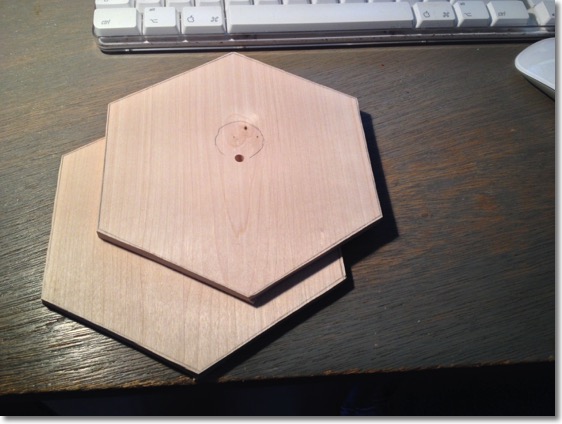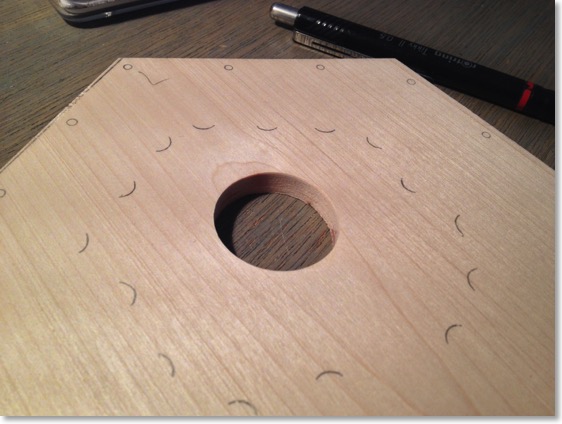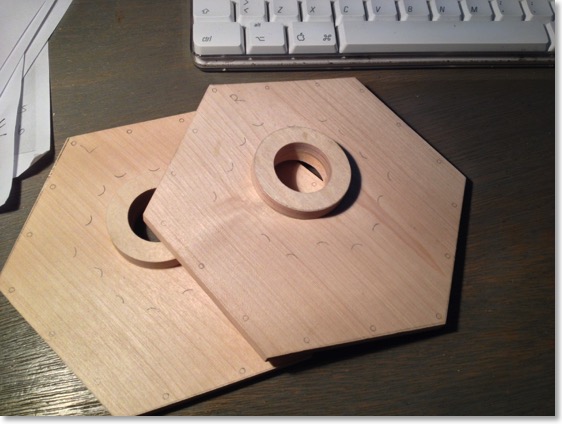The reed pan blanks were made from 7 mm solid maple (courtesy my mate Alf), roughly sawed (Japanese 0.3 mm saw) to a hexshape:

– and “fine-hex’ed” on the (now vertical) hexshape router:

The 5 mm center holes were plugged with a piece 5 mm birch stick (for supporting flowers, great stuff).
Vital points were then marked with a pencil: the starting points for the walls tracks and end points for the reed frames.

Donuts
A 28 mm hole was drilled. This hole was to become the center of the universe for the reed pan router. Why 28 mm? On all (most?) old instruments the hole has that diameter – it can’t be much bigger (there should be room for the reeds) and not much smaller, since you have to be able to get your thumb through it.

On top of the holes now go what I call the “donuts”. They act as the “end station” for the division walls in a radial reed pan (all English concertinas and some Anglos) and facilitates pulling the reed pan out of the bellows (hence the thumb-comment above).
The donuts were made by gluing together two layers of 4 mm aircraft ply, drilling a 28 mm hole and a roughly cutting a circle with a piecing saw with a coarse blade. Then lathed down to approx. 48 mm outer diameter and glued onto the reed pan with a 28 mm guide in the hole:

The tracks for the walls
The reed pan router (yes, yes - we will be coming to that soon) were now set up for routing the tracks. Width: 2 mm, depth approx. 1 mm. Great fun, and very fast it was:

Walls
The walls were made from 2 mm aircraft ply, cut by hand (Japanese 0.3 mm saw), and sanded so that one side was straight. Glue, cut, glue, cut, glue, cut, etc...:

Uuh, exiting!
I’ve been thinking about what I call “the reed pan tilt” – that the pan isn’t parallel to the end, but tilts a little, so that the low end chambers have more volume than the high end. No – I will not do that, I am simply too lazy to want to try and figure out how to do it.
The tilt may be one of the reason why English concertinas often sound more balanced than Anglos, but old ECs don’t have it, Anglos don’t have it, so this one is not going to, either.
Next Previous